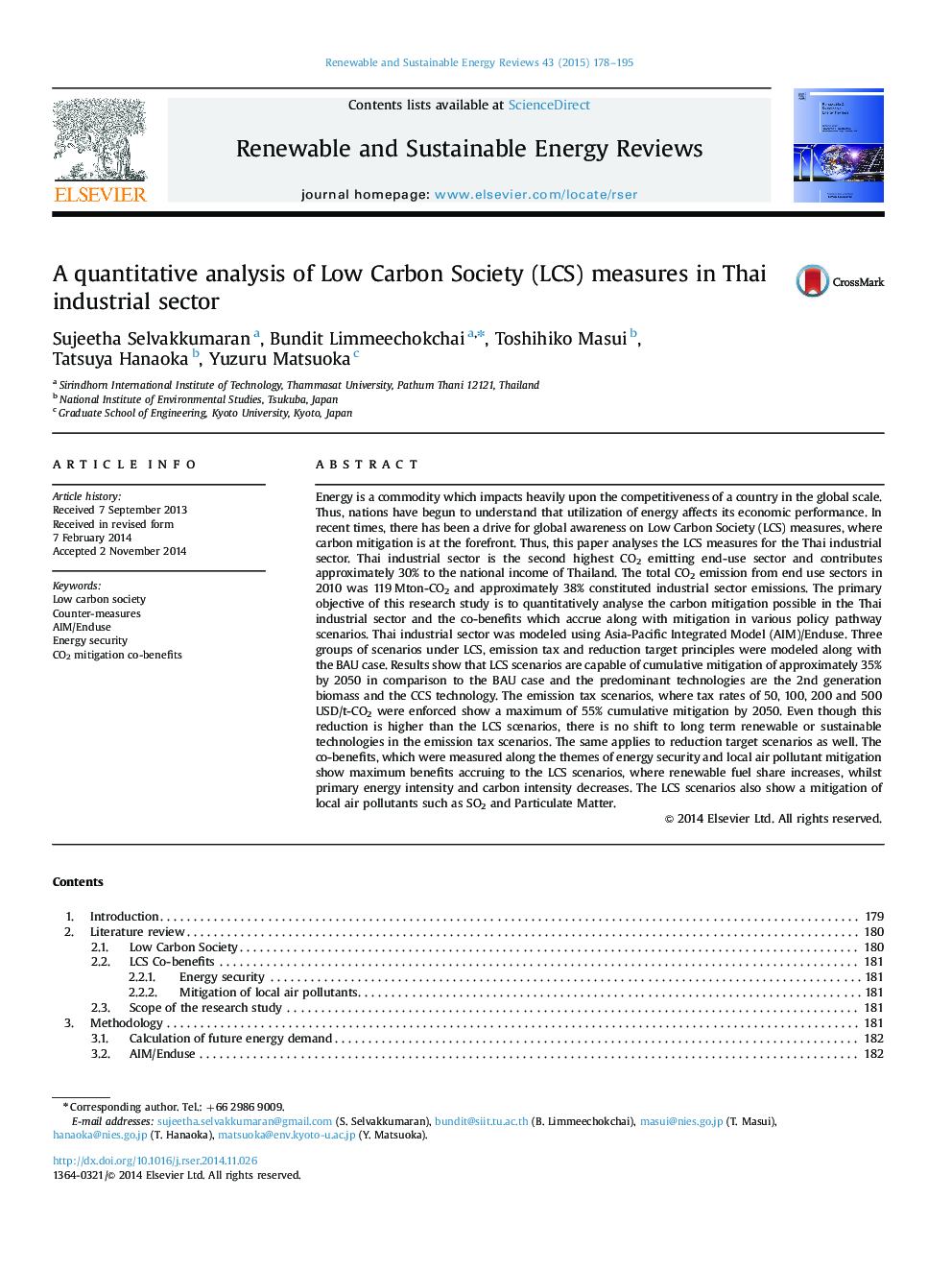| کد مقاله | کد نشریه | سال انتشار | مقاله انگلیسی | نسخه تمام متن |
|---|---|---|---|---|
| 8117526 | 1522342 | 2015 | 18 صفحه PDF | دانلود رایگان |
عنوان انگلیسی مقاله ISI
A quantitative analysis of Low Carbon Society (LCS) measures in Thai industrial sector
دانلود مقاله + سفارش ترجمه
دانلود مقاله ISI انگلیسی
رایگان برای ایرانیان
موضوعات مرتبط
مهندسی و علوم پایه
مهندسی انرژی
انرژی های تجدید پذیر، توسعه پایدار و محیط زیست
پیش نمایش صفحه اول مقاله

چکیده انگلیسی
Energy is a commodity which impacts heavily upon the competitiveness of a country in the global scale. Thus, nations have begun to understand that utilization of energy affects its economic performance. In recent times, there has been a drive for global awareness on Low Carbon Society (LCS) measures, where carbon mitigation is at the forefront. Thus, this paper analyses the LCS measures for the Thai industrial sector. Thai industrial sector is the second highest CO2 emitting end-use sector and contributes approximately 30% to the national income of Thailand. The total CO2 emission from end use sectors in 2010 was 119Â Mton-CO2 and approximately 38% constituted industrial sector emissions. The primary objective of this research study is to quantitatively analyse the carbon mitigation possible in the Thai industrial sector and the co-benefits which accrue along with mitigation in various policy pathway scenarios. Thai industrial sector was modeled using Asia-Pacific Integrated Model (AIM)/Enduse. Three groups of scenarios under LCS, emission tax and reduction target principles were modeled along with the BAU case. Results show that LCS scenarios are capable of cumulative mitigation of approximately 35% by 2050 in comparison to the BAU case and the predominant technologies are the 2nd generation biomass and the CCS technology. The emission tax scenarios, where tax rates of 50, 100, 200 and 500 USD/t-CO2 were enforced show a maximum of 55% cumulative mitigation by 2050. Even though this reduction is higher than the LCS scenarios, there is no shift to long term renewable or sustainable technologies in the emission tax scenarios. The same applies to reduction target scenarios as well. The co-benefits, which were measured along the themes of energy security and local air pollutant mitigation show maximum benefits accruing to the LCS scenarios, where renewable fuel share increases, whilst primary energy intensity and carbon intensity decreases. The LCS scenarios also show a mitigation of local air pollutants such as SO2 and Particulate Matter.
ناشر
Database: Elsevier - ScienceDirect (ساینس دایرکت)
Journal: Renewable and Sustainable Energy Reviews - Volume 43, March 2015, Pages 178-195
Journal: Renewable and Sustainable Energy Reviews - Volume 43, March 2015, Pages 178-195
نویسندگان
Sujeetha Selvakkumaran, Bundit Limmeechokchai, Toshihiko Masui, Tatsuya Hanaoka, Yuzuru Matsuoka,